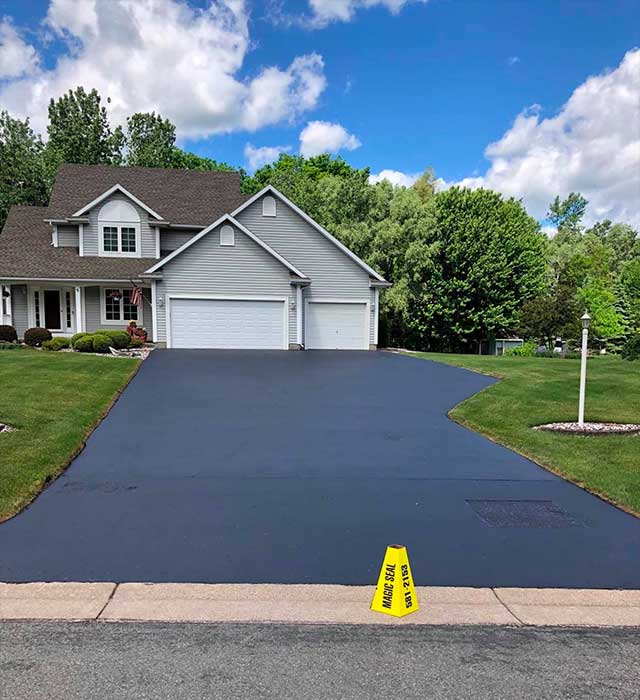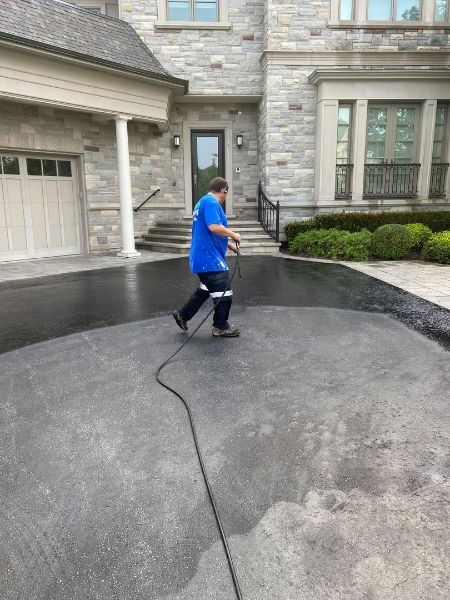Understanding Tilted Parking: How Asphalt Sealing Enhances Commercial Great Deals
Warm Mix Asphalt: A Lasting Remedy for Sidewalk
Warm Mix Asphalt (HMA) has become a leading sustainable choice for sidewalk services, using a myriad of ecological benefits and ingenious innovations. Its capability to reuse materials and minimize energy intake offers an engaging situation for its adoption in roadway construction tasks. The lasting performance and resilience of HMA make it a preferred alternative for framework advancement. As the demand for environmentally friendly construction techniques expands, checking out the nuances of HMA's sustainability can give beneficial insights right into the future of pavement remedies.
Environmental Advantages of Warm Mix Asphalt

Furthermore, Hot Mix Asphalt aids to alleviate urban warm island results. Its dark color soaks up sunlight, lowering the amount of warm reflected back into the ambience compared to lighter-colored sidewalks. This can lower ambient temperature levels in urban areas, lowering the demand for cooling and ultimately minimizing power consumption.
Additionally, Hot Mix Asphalt contributes to enhanced stormwater administration. Its permeable nature permits water to penetrate the pavement and recharge groundwater materials, minimizing drainage and the threat of flooding. These ecological benefits make Warm Mix Asphalt a sustainable choice for leading roadways and highways.
Energy Effectiveness in HMA Production
Is energy effectiveness a crucial consider the production of Hot Mix Asphalt (HMA)? Absolutely. Energy plays a significant role in the production of HMA, impacting both cost and environmental sustainability. One vital facet of power performance in HMA production is using warm mix asphalt (WMA) technologies (regrading). WMA enables for the blending and positioning of asphalt at reduced temperatures compared to traditional warm mix asphalt, leading to decreased energy intake throughout production. This process not just lowers fuel usage yet additionally reduces greenhouse gas discharges, making it a more environmentally pleasant choice.
In addition, improvements in plant technologies have actually caused more energy-efficient HMA manufacturing processes. Modern plants are made with functions like recycled asphalt sidewalk (RAP) processing capacities, effective heater systems, and enhanced insulation, all contributing to energy financial savings. By enhancing power usage in HMA production, the industry can reduce its carbon footprint while keeping top notch pavement materials. Power effectiveness is, consequently, a vital consideration in making sure the sustainability of Hot Mix Asphalt manufacturing.
Recyclability of Warm Mix Asphalt
The recyclability of Warm Mix Asphalt (HMA) is a critical aspect of its sustainability and long-term ecological influence. HMA is among the most recycled materials in the United States, with over 100 million lots of redeemed asphalt pavement (RAP) being recycled yearly in new sidewalk building. Reusing HMA uses numerous environmental benefits, such as minimizing the requirement for virgin products, decreasing power you can check here consumption during manufacturing, and decreasing the amount of waste sent out to land fills.
The process of recycling HMA involves grating the existing sidewalk, crushing it into smaller pieces, and blending it with new aggregate and asphalt binder to create a recycled mix. This recycled mix can usually execute along with and even much better than traditional HMA, while needing fewer resources and generating lower greenhouse gas emissions. By incorporating RAP right into brand-new sidewalk tasks, roadway companies can save natural resources, minimize costs, and reduce the environmental impact of roadway building and construction and upkeep tasks. On the whole, the recyclability of HMA plays a substantial function in advertising sustainable methods within the pavement sector.

Long-Term Performance of HMA
Asphalt sidewalks demonstrate durability and durability over an extensive period, mirroring the long-term efficiency of Warm Mix Asphalt (HMA) why not look here Furthermore, innovations in HMA technology, such as the usage of polymer-modified binders and cozy mix asphalt, have better enhanced the toughness and longevity of HMA pavements. By focusing on quality building and upkeep practices, HMA proceeds to confirm itself as a sustainable and economical solution for lasting sidewalk framework.

HMA: Longevity and Sustainability
Showing both sturdiness and sustainability, Warm Mix Asphalt (HMA) has actually become a keystone in the construction of long-lasting sidewalk facilities - hot mix asphalt. HMA's longevity comes from its capacity to stand up to heavy tons, extreme climate condition, and high web traffic volumes, making it a trustworthy selection for roads, highways, and airport terminal runways. The structure of HMA, which generally consists of accumulations, binder, and filler, plays a vital duty in improving its long life and resistance to deterioration
In addition, HMA's sustainability depends on its recyclability and energy-efficient production procedure. The capacity to reuse recovered asphalt sidewalk (RAP) in new HMA mixes minimizes the need for virgin materials and reduces the environmental influence of sidewalk construction and maintenance. Furthermore, the power efficiency of producing HMA depends on its lower blending temperature levels contrasted to other pavement materials, causing lowered energy usage and greenhouse gas exhausts.
Conclusion
In conclusion, hot mix asphalt (HMA) provides a sustainable service for pavement with its eco-friendly attributes. HMA's recyclability, energy efficiency in production, and long-term sturdiness make it an eco-friendly choice for roadway building and construction. By preserving all-natural sources, minimizing waste, and decreasing greenhouse gas discharges, HMA plays an important role in promoting sustainability in infrastructure growth. Its capacity to alleviate metropolitan warm island effects further recommended you read emphasizes its significance in producing resilient and environmentally aware pavement systems.
HMA is one of the most recycled materials in the United States, with over 100 million tons of redeemed asphalt sidewalk (RAP) being reused annually in brand-new pavement building and construction.The process of reusing HMA entails crushing the existing pavement, squashing it right into smaller pieces, and mixing it with brand-new accumulation and asphalt binder to produce a recycled mix.Asphalt pavements demonstrate sturdiness and strength over an extensive period, reflecting the lasting performance of Hot Mix Asphalt (HMA) In addition, innovations in HMA technology, such as the use of polymer-modified binders and cozy mix asphalt, have additionally boosted the durability and long life of HMA sidewalks. The ability to recycle recovered asphalt sidewalk (RAP) in brand-new HMA mixes minimizes the demand for virgin materials and minimizes the ecological effect of pavement building and construction and maintenance.